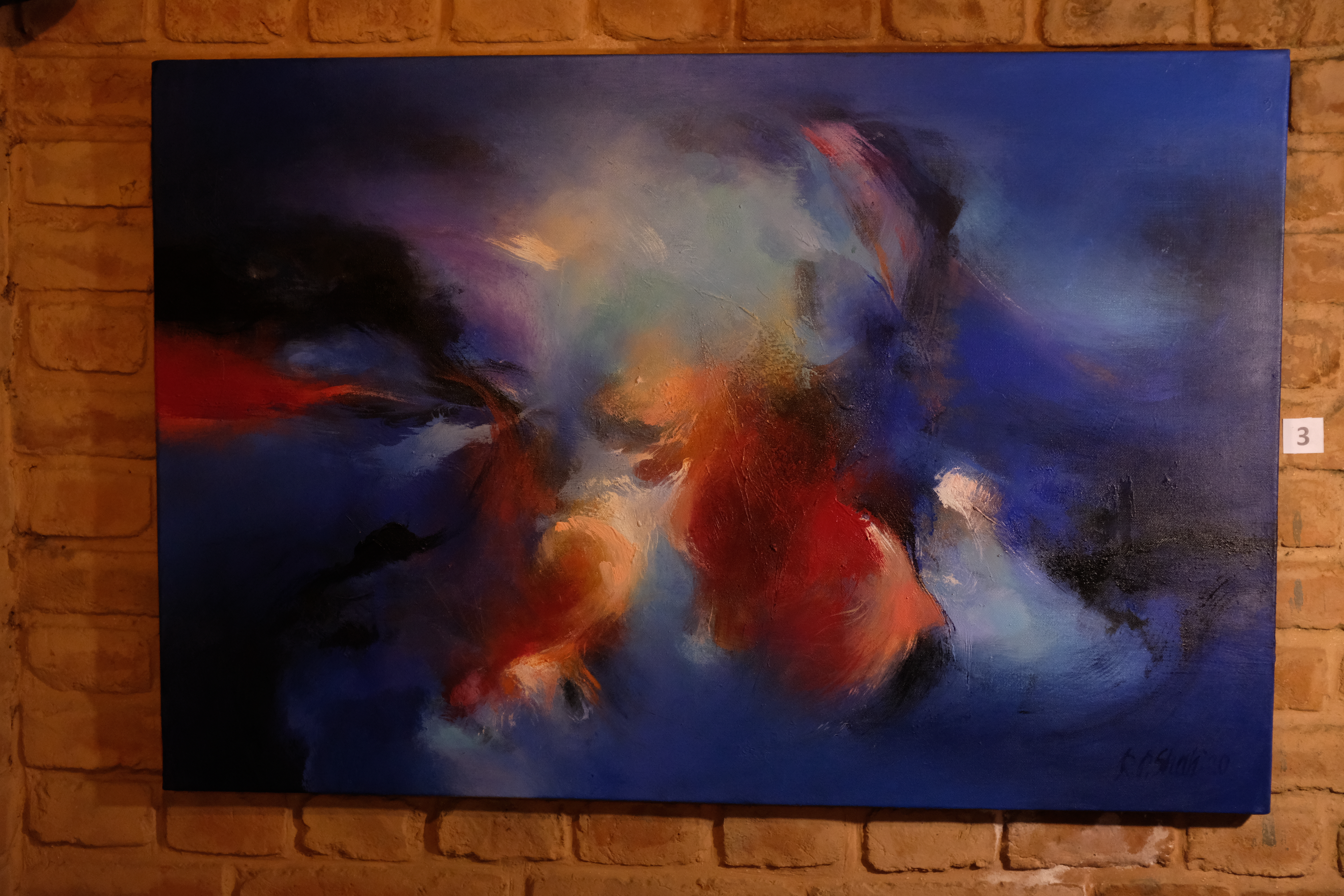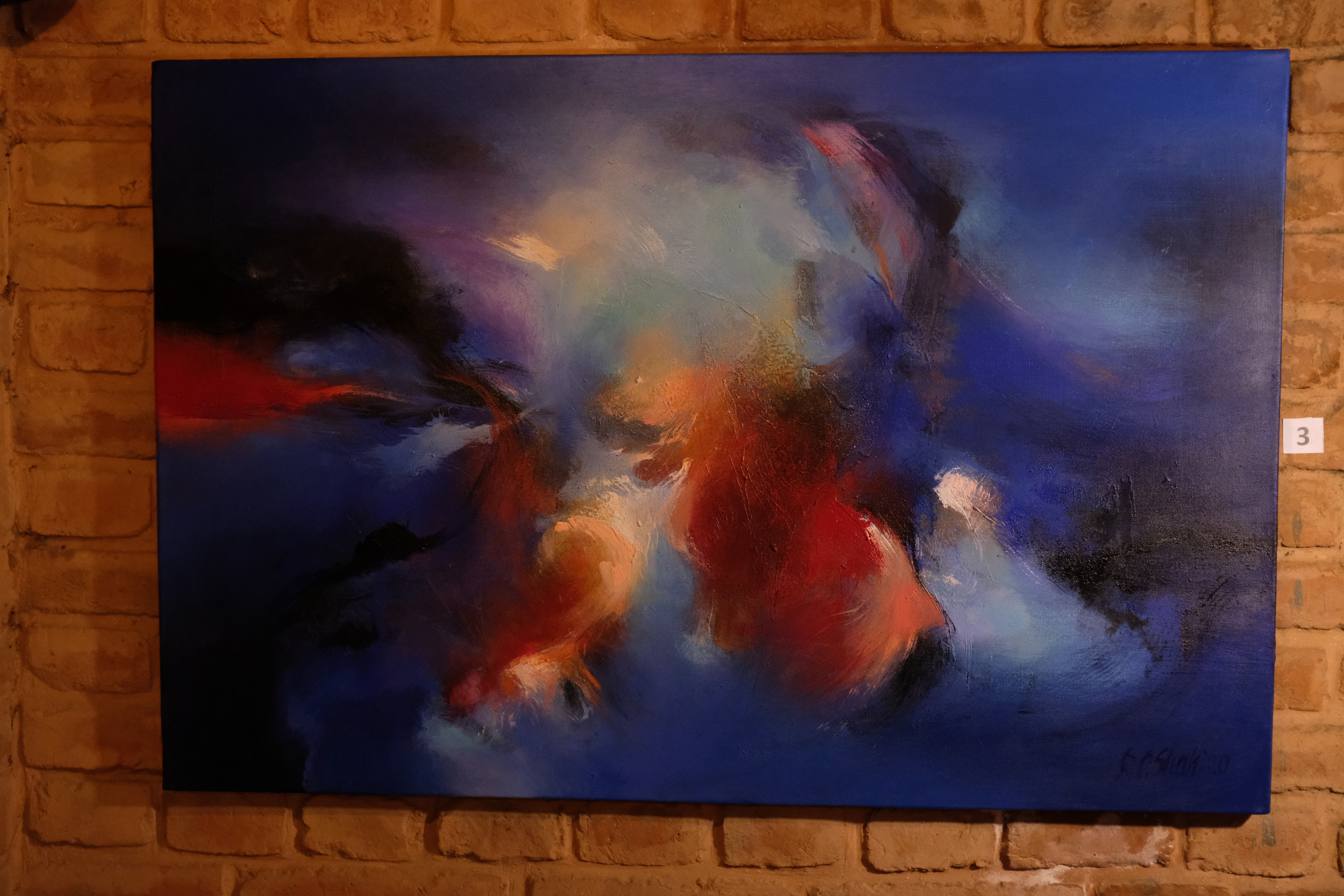Bishnu Dahal: Maoist’s revival: Challenges galore
These days, CPN (Maoist Center) is doing everything it can to bounce back in Nepali politics—either by training party cadres or by conducting massive membership distribution drives. Are they doing the right things to get back on the political stage? Also, why would the people join the Maoists rather than the Nepali Congress or the CPN-UML? There have also been discussions on finding a successor to even Prachanda, who often expresses his desire to unite all left-wing groups. Pratik Ghimire of ApEx talked to political analyst and Tribhuvan University lecturer Bishnu Dahal on the issue.
Is the revival of Maoists possible?
Politics is a game of possibilities, so we can’t close the door to any event in the future. But it is not a straightforward path for them to reach that destination.
What steps should the Maoists take to ensure their revival?
The progolonged disputes between China and India affect all surrounding nations—which make the Asian geopolitics always volatile. So, firstly, Maoist should clarify their stand in Asian and world politics. Their economic plans, foreign policy, stand on climate and environmental issues, and agenda for the betterment of the livelihood of Nepalis are the things that will matter in the coming days.
If they succeed in convincing the public that they are indeed in favor of progress and that their armed revolution led to the restructuring of the state, they might stand a chance to bounce back.
Are the Maoists different from the Nepali Congress and CPN-UML? How?
If we look at the historical background of the Nepali Congress, it claims to have gradually accustomed the people about democratic practices and developed the nation through an open economic policy.
Similarly, the CPN-UML advocated for a mixed economy with people’s participation in social development. But, the Maoists said the structure of the state was what was keeping us behind in development.
So, the Maoists’ view differed from that of other parties. But as of now, I find that all political parties are the same, it’s just that they have a different name and a logo.
Also read: JSPN fissures will benefit Nepali Congress
The Maoists succeeded in implementing their agenda, but they focused on changing the ruler. They didn’t deal with the lifestyle of the masses—whose condition never changed, even when the state was restructured.
Nepali political parties could not establish a culture of competition. Rather, they opted to share power and resources through consensus.
Who do you think will lead Maoists after Prachanda?
We changed the structure of the country but not economic policy. A party only needs a new leader if it changes its policy. But Maoists have not done that.
So, whoever comes in Prachanda’s place, little will change. Yet, I find a quote from Baburam Bhattarai relatable in this scenario, “We have achieved the agenda set by the Maoist revolution, so there is no option but to dissolve this party and come up with newer progressive agendas.”
There is no place for a new leadership without new agendas. But, if you ask me about Prachanda’s successor, I see Janardan Sharma and a couple of others.
Do Maoists have the strength to unite all the left-wing groups in Nepal?
Prachanda has the potential to either unite or break other communists’ groups, but what matters here is, can he prove the necessity of such unification? I don’t think so.
Saigrace: The ace storyteller
A young man in big wire-rimmed glasses pops up on your social media timeline. His voice is soothing and his storytelling captivating. Soon you find yourself browsing his profile, wanting to listen to more of his stories. Eventually, you become his regular listener as his voice puts you to bed after a hectic day.
This is the story of many Nepalis who spend hours listening to Santosh Pokharel, widely knows as Saigrace on Facebook, Instagram, YouTube, TikTok, or any other social media platform. From his childhood, he was a devotee of a Sai Baba so his family gave the name Saigrace—grace of Sai Baba.
Saigrace writes and recites stories on the universal themes of love and struggle that his audiences can easily relate to as if they were their own. There is also enormous solace in his voice.
His storytelling journey started when he was small and his father used to tell him folklores after the family dinner. Entertainment sources were limited back in those days. Inspired by his father, Saigrace also started telling stories, but only to his friends and classmates.
Almost everyone who listened to his stories became his fan. This made him realize the power of storytelling, and that it was not just about the script but also the way a story is narrated. “But, seriously, I never thought storytelling could ever become a job,” he says.
Saigrace was in the 12th grade in 2012 when he recited one of his stories at a conference before a mass of 1,500. “It was then that many people suggested that I start a career in storytelling,” he recalls.

Soon, he started doing voice-overs for documentaries and movies. With a decent number of projects under his belt, he also appeared on screen during the pandemic-triggered lockdown. Once he started to tell stories on screen, he got much more appreciation and became a sensation in a matter of weeks.
“I was happy with my job even before people saw my face. Yet I think the videos of 2020 lockdown helped establish me,” Saigrace says while sharing the breakthrough moment of his career.
All the stories he recites are his own. He loves to write and recite his own experiences so that they directly connect with the people. “I have already published five audio novels and all of them have done well,” he says with an air of satisfaction.
Saigrace, who lives and works in Barcelona, is now in Nepal on a vacation. But he is busy conducting school programs and telling students that no skill goes to waste.
“Having a commanding voice is just a plus point. It is our knowledge, learning, research, and practice that help us succeed in what we do,” he says. “You don’t need much to go viral, but to sustain, you must work on technicalities.”
For every video session, Saigrace prepares a story plot and writes it down with the characters, scenarios, buildup, climax, and more. “Your writing skills get better only if you have a habit of reading,” he says—and he does read a fair bit.
After that, he sets up mic and camera and starts reciting, always focusing on his pronunciation, pauses, and stresses. Lastly, he edits and designs videos before publishing them.
Also read: Purnima Shrestha: Passion to climb, urge to click
“I work in the media so it is quite easy for me to edit videos,” Saigrace, who also owns a production house, explains the behind-the-scenes to ApEx.
“We must be aware of the ethics of our job because it directly affects the society and something you say could easily backfire,” he warns those who want to enter this field. “Stories are the society’s mirrors and the social norms and values must be maintained at all times.”
Audience reach is one of the key challenges of storytelling. So, you need consistency and continuity, he tells aspiring storytellers. If you do that, you will gradually get better.
Soon, other people seeking indirect motivation will follow your job. “I have seen people follow my presentation techniques. Those who were not interested in literature are now interested in it because of my videos,” Saigrace says with a satisfying smile.
“Our country doesn’t have a voice industry,” he says. “Yet it’s a powerful medium and something we must promote.”
Can Nepal be self-reliant on flowers? Definitely
Tihar, the festival of lights and flowers, is incomplete without sayapatri (marigold), makhamali (globe amaranth), and godavari (chrysanthemum).
Although Nepalis use a significant amount of flowers throughout the year, the demand is high especially during Tihar. But domestic production has been unable to meet demand, even in off-peak months.
Demand for flowers increases by around 15 to 20 percent every year in Nepal. So, to supply enough flowers in the market, professional florists often import flowers from India. As usual, this time too, they have prepared the logistics to bring flowers from India.
The Floriculture Association of Nepal (FAN), an NGO that studies the flower market, helps farmers and florists. It suggests that around 1.85 million garlands (usually a meter long) will be sold in the market this Tihar. Of them, around 1.5 million will be sayapatri, 0.3 million makhamali, and the remaining are of godavari.
Last year, due to the pandemic and the subsequent lockdown, the domestic production of commercial flowers was significantly low, and so was the demand. But things are different this time. The demand for flowers is estimated to have gone up by 15 percent over the previous two years. It is believed that around 15 percent of total demand will be met by imported flowers.

Nepali production could have met 90 percent of the total demand, but the recent unseasonal incessant rain destroyed matured flowers that were almost ready to be harvested for Tihar. “The Covid-19 pandemic has also heavily affected production,” says Biswomani Pokharel, general secretary of FAN.
Due to the risk of coronavirus, farmers didn’t invest as much in flowers as in previous years, which has led to a further decline in production. But the demand has increased. “The planting time was from February to August, the time when we experienced the deadly second wave, so the farmers didn’t take the risk,” he adds.
Prices are expected to rise this year as demand is high and more flowers have to be imported from elsewhere than the previous year. The price of one garland is expected to hover around Rs 80 to 100. It was Rs. 60 to 70 last year.
The flower business, which had been losing Rs 10 million daily due to the Covid-19 pandemic for a long time, is now churning out business worth around Rs 7 million a day. Every year, August to March is the busiest season for the market as flowers are in high demand during the wedding season.
Flowers worth Rs. 400 million are sold annually in Nepal. But internal production in off-seasons is still unsatisfactory.
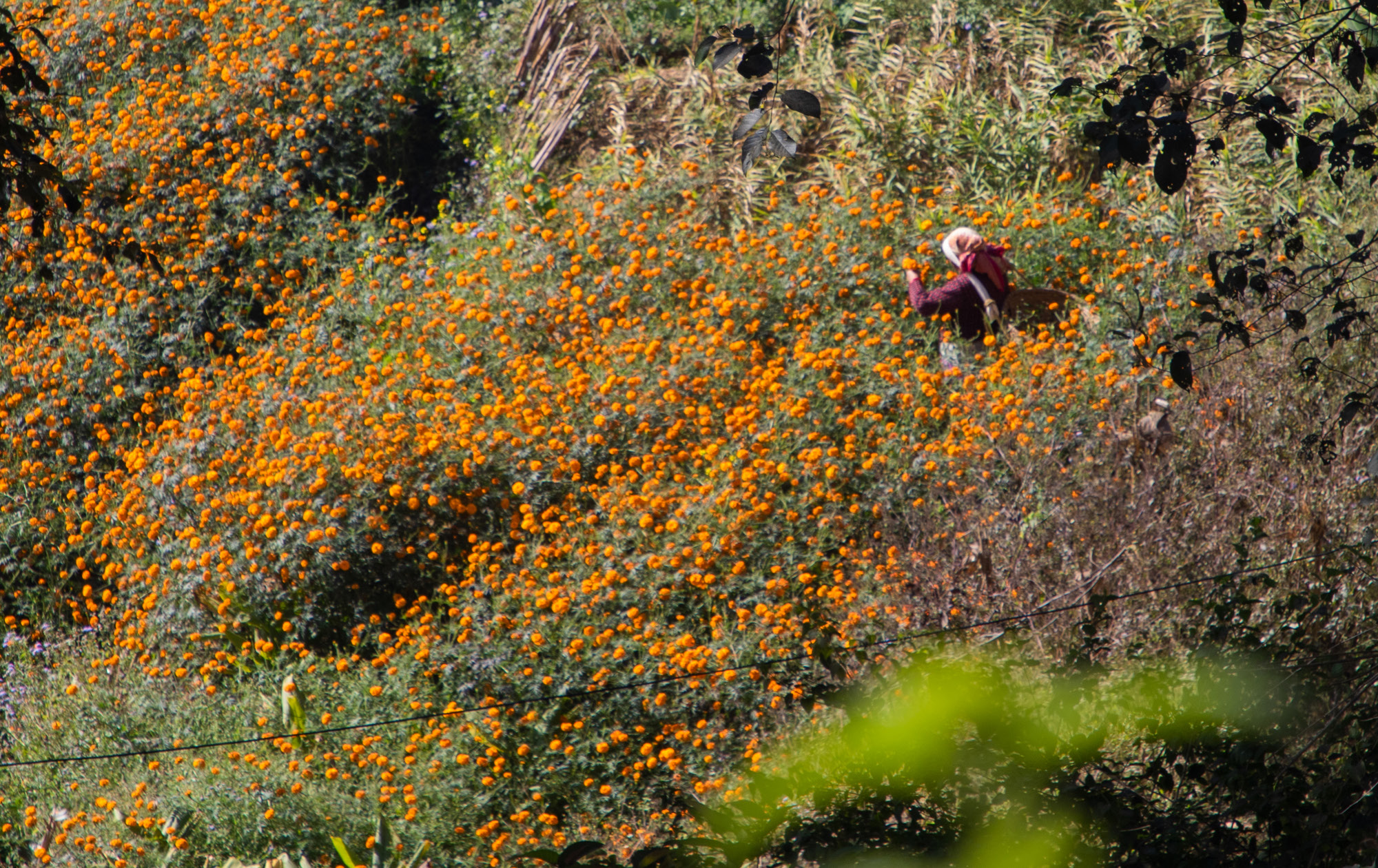
Almost 65 percent of flowers are imported for occasions other than Tihar. “Nepali farmers are focused only on supplying flowers during Tihar, so domestic production is weak during other seasons,” says Sitaram Panta, owner of Fresh Flower Shop in Jawalakhel. “If the production capacity increases, we won’t have to depend on India.”
The climates of India and Nepal are similar, and Nepali florists could also produce and meet the demand here for all seasons. Uma Shankar Prasad, economist and member of the National Planning Commission, accepts that the government and concerned parties haven’t studied this subject.
“Floriculture is a part of agriculture and it has no visible contribution to the national economy, so none of the government departments have calculated the exact data of demand, production, consumption, and supply of flowers,” he says.
“Nepal, till date, has not considered flowers as cash crops.”
FAN has tentative data on floriculture, but the Nepal government is yet to conduct research on it. “Quality training, irrigation, technology, and futuristic seeds could help our farmers a lot,” says Panta. “We could eventually cut imports to zero if the concerned bodies help farmers on all-season farming.”
Along with the increase in demand for flowers, commercial floriculture has expanded to 28 districts, including Kathmandu, Lalitpur, Bhaktapur, Kaski, Chitwan, Gulmi, Palpa, and Morang. Nepal currently produces 450 species of flowers commercially. They are cultivated by 700 farmers in an area of about 157 hectares.

ApEx Series | Women in stock market: The more the merrier
The Securities Board of Nepal (SEBON), the securities market regulator, doesn’t have exact data on women investing in the share market.
According to Nepal Stock Exchange Limited (NEPSE), there are around 3.4 million users registered in the ‘MeroShare’ website, i.e. they can apply for Initial Public Offering (IPO) of any company online. NEPSE also informs that almost 925,000 users are registered in the Trading Management System (TMS), which allows users to trade, mostly online.
Yet the officials of these bodies ApEx contacted broadly agree that around 25 percent of all investors in the primary market are women while the corresponding ratio is 15 percent in the secondary market. Even though the number is much smaller compared to men, it has been on the rise.
Many women in Nepal are full-time investors who monitor NEPSE index fluctuations on their mobile phones or laptops—all-day-long.
Sushila Dahal, 41, has now been a regular investor in the Nepali share market for a decade and says she is not interested in any other job. Back in 2011, she had around a million rupees but had no idea what to do with it. “At first, I thought of starting some business,” she says. That was before her uncle introduced her to the share market. She has seen many ups and downs in the market in this time but is still standing firm with a portfolio of Rs 6.5 million.
Also read: ApEx Series | Of the beginning of NEPSE and its bears & bulls
Bindu Singh, 47, shares her experience of entering the share market in 2013: “My neighbor, a senior Nepal Rastra Bank officer, advised me to invest.” A full-time NGO worker, she had some savings back then, which she decided to invest in shares, and she currently has a portfolio of over Rs 10 million. Singh spares some time from her job every day to keep abreast of market fluctuations.
Since the start of the Covid-19 pandemic in early 2020, many young women, with not much else to do, have jumped on the share-market bandwagon. In fact, the lure for youngsters has since been steadily on the rise.
Sarishma Kafle, who is only 19, was one of them. Her whole family has decent investments, which was motivation enough, not just to start investing but also to join a brokerage. During the lockdown lull, Kafle started with investing her mother’s money. She has now already amassed a portfolio of over a million rupees. “Since I started working at a brokerage, I have become an ever better investor, and I am thoroughly enjoying it,” she shares while narrating her year-long experience of the bear-bull roller coaster rides.
There are women who invest a part of the money their husbands remit from abroad, which has been a fruitful venture for many.
Also read: ApEx Series | Digitization: Need for constant improvement
“I invest a fraction of the money my husband, who is working in Qatar, sends as house expenses,” says Rama Nepal, 36, who entered the market after it started online in late 2018. She had initially kept her share investments a secret from her husband and let him know only when she started making a profit. “We are both happy now and my husband sends extra money for investment whenever I ask for it,” Nepal shares.
Samyukta Bhandari, 29, was pursuing her MBA back in 2016 when she got into share-investing, which was a part of her college assignment. Now, she has amassed a portfolio of almost Rs 7 million. She says the start of online trading has been a boon for women investors. “Some women were investing even before that. But online trading was a ground-breaker, as it removed many of the traditional barriers that prevented women from investing in shares,” she says.
In order to attract more women into the share market, International Finance Corporation (IFC), a member of the World Bank Group, is collaborating with NEPSE. The goal is to raise awareness on gender equality in finance, in a campaign called ‘Ring the bell for gender equality’.
According to an IFC report, of the 132 board members of 20 Nepali companies, only 12 (nine percent) are women. Despite Nepal’s Companies Act 2066 BS requiring at least one female board member, only three out of every 10 public companies have women on their boards.
Also read: ApEx Series | The vicissitudes of Nepali stock market
Dambar Chemjong, head of the Central Department of Anthropology at Tribhuvan University, is happy that more and more women are getting into the stock market. “The share market helps move capital, and keeps the economy humming,” he says. “The involvement of more women, who make over half of the country’s population, will ensure a more equal distribution of this capital.”
Shreejana Subedi, an executive member of Nepal Investors Forum, appeals to women to be more confident and invest in the share market. For her, women are natural savers; they tend to be risk-average and invest only based on solid market research. “This ultimately provides higher returns even though the share market is considered a high-risk area,” she adds. “Rather than working for others, more and more women should look to gain self-sufficiency this way.”
Swechha Shrestha, a Chartered Accountant at Everest Bank, suggests some caution though. “A lot of my friends, including myself sometimes, like to follow some supposed market maven and invest blindly—which is definitely unwise,” she says. “Share market investing can be a good source of income for women provided they learn to do it wisely.”
Souvenir’s Gallery Café: Of delectable cuisines and canvases
These days, every food place provides wireless internet to keep its visitors entertained. Some are also into creative décor. Satendra Kaji Shrestha, founder of Souvenir’s Gallery Café, has added his own twist to lure visitors.
The 58-year-old former tourist guide always wanted to work in tourism as he considers the industry a major source of the country’s income. “Art and cafés are the two strong pillars of tourism,” he says. This is why, he adds, places like Souvenir’s, an exhibition place-cum-café, could be an instant hit among tourists.
“We can make this place the busiest tourist hangout area if everyone works together,” says Shrestha about his Soltee Mode-based eatery and the surrounding area.
For this purpose, Shrestha has collaborated with five internationally recognized Nepali painters, none of whom expects much profit from the venture. We are here to start a new trend, they say.
Krishna Manandhar
One of the senior-most artists in Nepal, Manandhar completed his Bachelors in Fine Arts from Sir JJ School of Arts, Bombay in 1970. With more than 35 years of teaching under his belt, Manandhar has five solo and 25 group exhibitions to his credit.
Abstract works with natural beauty gives him great aesthetic pleasure. “In the melodious motion of life, we sometimes see sudden silences,” says Manandhar.
Sushma Rajbhandari
Rajbhandri, head of the department of painting at Lalitkala Fine Art Academy, has been in the art scene for over three decades. She has a master's degree in creative painting and has successfully organized 16 physical solos and two worldwide virtual solos.
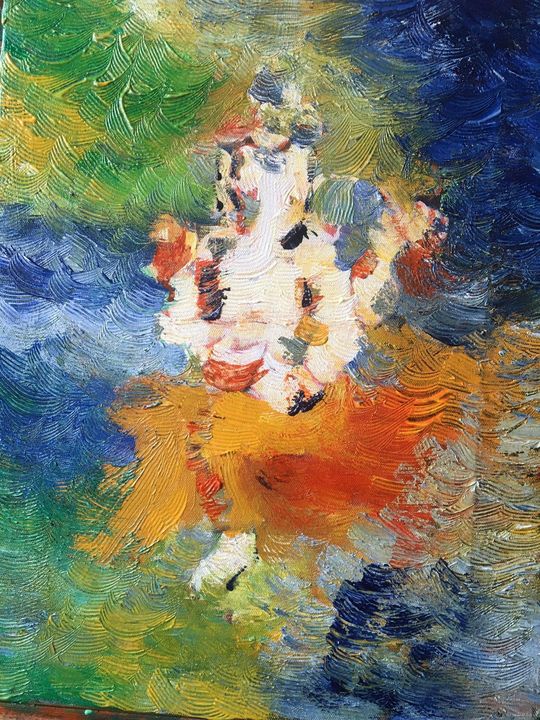
The artist, trainer, educator, and academician, creates compositions with spiritual tones and divine figures. Her paintings of lord Ganesh are widely recognized.
Says Rajbhandari about her works: “The parallel patterned texture provides a distinct dimension, adding delicacy and mysterious directions to my painting”.
Krishna Prakash Shah
A visiting lecturer at Kunst Akademie Kalkar, Germany (2016-2018), Shah is an established contemporary abstract Nepali artist. His canvas reflects a variation of close-knit colors and its rhythmic taste.
Shah completed his Master in Fine Arts from Tribhuvan University. An art studio member of Nepal Fine Arts Academy (1997-2015), he took part in the 14th Asian Art Biennale, 2010, in Bangladesh. He has showcased his paintings at three solo exhibitions in Nepal and Europe. No one can escape the instant artistic pleasure of his works.
“Abstraction is the perfect vehicle for innovation,” says Shah.
Nem Bahadur Tamang
A PhD scholar in visual art, Tamang is also known for his abstract visual arts. Also an assistant professor at Fine Art Campus, TU, he writes poems and passionately follows philosophical works. He has four solos and hundreds of group exhibits to his name.

“I focus on the depth of materialist figures,” says Tamang, who avoids cosmetic veils. He explores the complexity of human psychology to make his painting unique and inclusive. Instead of trying to find joy in the physical world, he likes to dive into the depths of imagination to draw pearls.
Mukesh Shrestha
A gold medalist artist, Shrestha holds a Master in Fine Arts degree from Banaras Hindu University, India. He enjoys the fusion of traditional and contemporary paintings, which is a result of his socio-political inspiration. His six solos and more than 70 group exhibitions all connect structure and divinity, forcing all viewers into deep thought.
“I like to evoke feelings of love, compassion, and spirituality in my paintings,” says Shrestha whose works attempt to help spectators discover the path of love and spirituality. To add lucidity, he reduces the colors and curves–and avoids superficial decorations.
Nepali Congress boosted by influx of new blood ahead of its general convention
After much uncertainty, the preparations of Nepali Congress for its 14th general convention are finally gathering steam. The Grand Old Party has already organized ward-level conventions and municipal conventions are due soon, while the general convention is scheduled for November 25-29. The lead-up to the main event has been interesting for the party as many youngsters, including teenagers, have been elected as ward and regional level representatives. Pratik Ghimire of ApEx interviewed 10 such young regional representatives: Why join politics so young, we asked them?
Vox pop
Barsha Rani Shrestha, 18
Damak Municipality-7, Jhapa

In the ward that I live in, the presence of women in politics is virtually nil, and I wanted to do something about that. I want to represent women in my area in order to fight for their rights. Four other senior leaders also wanted the position I was eventually elected to, but they later agreed to withdraw and I became the consensus candidate. I know I have landed a prominent role and with it comes responsibility, but I am ready for the challenges ahead.
Bikal Rai, 20
Diktel Rupakot Majhuwagadhi Municipality-1, Khotang

Even during my childhood, I found politics interesting and I later decided to join student politics. To be honest, in recent times, the Nepali Congress has erred from the path envisioned by BP Koirala. This is the reason why the party has had to face many setbacks. I think this is the right time to revive Koirala’s ideology, and only the youths can do that.
Binod Raj Joshi, 21
Malikarjun Rural Municipality-8, Darchula
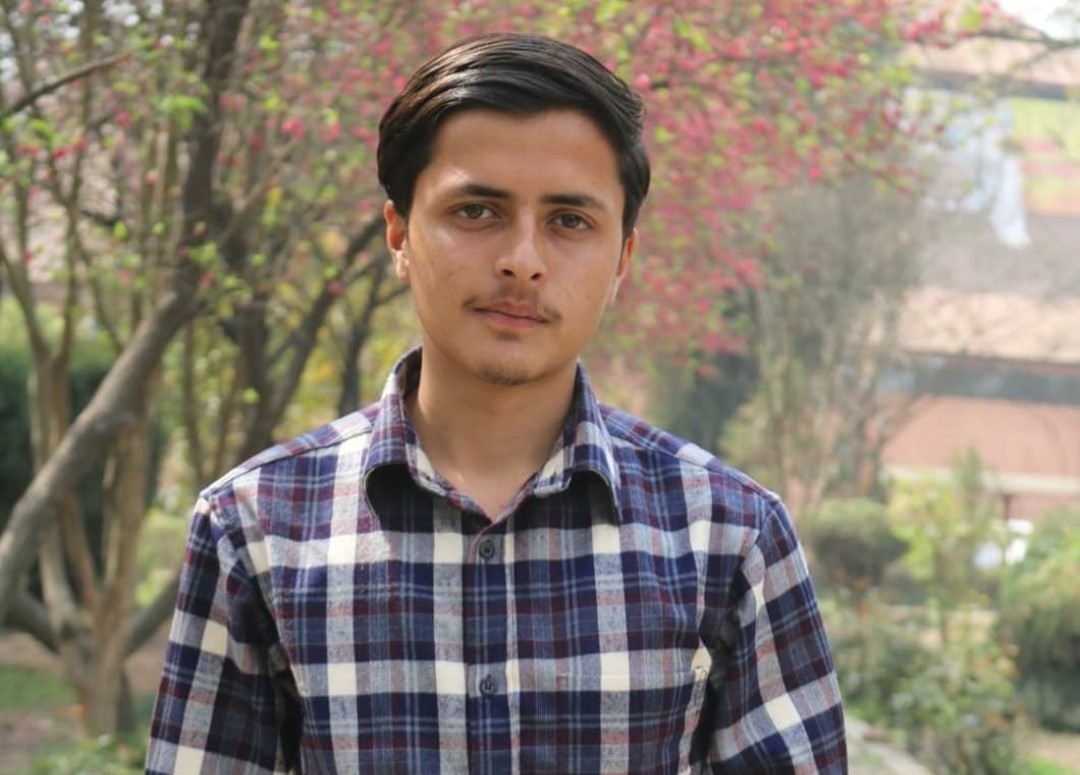
The prime motivation for me to get involved in mainstream politics was my passion to take up leadership roles. There can be no national transformation without politics at its core. Lately, a discourse has started on the transformation of Nepali politics, and I decided to jump in—I am not among those who wait for the opportunity. I want to fight for my spot because it helps sharpen my skills. I don’t want to be one of those ordinary youths who only abuse the system for their benefit.
Dinesh Bhatta, 21
Shikhar Municipality-9, Doti
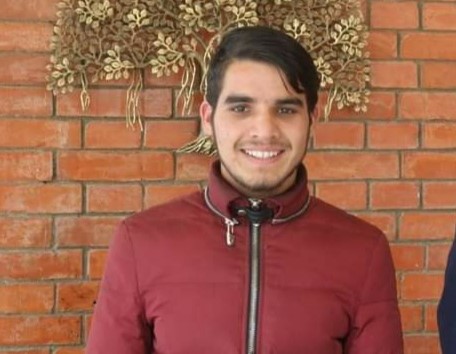
I belong to the geographically remote far-west region. Growing up, I had limited access to books, but I used to listen to political news and interviews on the radio. They helped hone my passion for politics and ever since, I had nurtured a dream of becoming a leader to develop my region. That was also why I joined mainstream politics and the Nepali Congress.
Jem Singh Rai, 24
Halesi Tuwachung Municipality-6, Khotang

Every situation comes with its challenges. Nepal is facing a host of challenges these days, and the youths are the ones who can find solutions to these challenges. We have the responsibility to take the Nepali Congress to newer heights as the country can move ahead only when the political parties have a strong base. This is why I joined mainstream politics. I want to help with nation-building and this convention gives me that opportunity.
Kareena Puri, 19
Melamchi Municipality-9, Sindhupalchok

Youths are the nation’s pillars. It is the youths and their convictions that have led to substantive changes in Nepal. Unfortunately, leaders from the older generation like to cling to power. Everyone knows these politicians have lost their sense of direction. Youths like me are now in politics so that we can change the system. Nepal is a young nation and only youth leaders can understand the needs and aspirations of their fellow youths.
Padama Bhushal, 22
Galyang Municipality-4, Syangja

I have a huge passion for leadership and politics is one means to get to a leadership position and help the society. As a woman, I have faced a fair share of challenges and there was a time I thought of quitting. But if I give up, the new generation will ask me why I let the status quo continue. So I took part in the convention and secured the position through consensus. My goal is to inspire women and society.
Sachin Timalsena, 28
Yangwarak Rural Municipality-1, Panchthar

Most Nepali youths believe in democracy. Young people understand politics and know how to respect other people’s opinions. This is why youngsters are actively joining politics. The Nepali Congress is a democratic party and its convention starts from the ground level. This helps youths to grow. This is the reason I chose the Nepali Congress.
Sagun Kandel, 23
Galkot Municipality-8, Baglung

A few factors motivated me to join politics. The first is that I don’t like the old faces running the country. They have repeatedly failed the system and the country. There is no spark in their leadership. Moreover, nobody is interested in fulfilling our dream of democratic socialism.
Saraswoti GC, 20
Sunkoshi Rural Municipality-2, Sindhupalchok

If we want change, we need to come forward. We do not have educated women in politics and their participation is negligible. Being a literate female youth, I started my political career with Nepal Student Union, the student wing of Nepali Congress. But when the NSU failed to hold its convention on time, I thought of getting involved in mainstream politics.
What if… the 2015 constitution had been delayed?
September 19 marks the sixth anniversary of the promulgation of the Constitution of Nepal 2015. While a sizable population celebrates the day with fanfare, many in Tarai-Madhes observe Constitution Day as a Black Day, a big setback in their fight for representation and justice.
The constitution, drafted following the decade-long Maoist insurgency and two Madhes movements, is yet to fully address the demands of Madhesis. Nonetheless, although disagreements over the constitution have inevitably surfaced, all political parties have decided to resolve them in a democratic way.
But, what if the constitution had not been promulgated on that day? How would the country be faring today?
Radheshyam Adhikari, member of the National Assembly and ex-chairperson of the Regulation Drafting Committee of the Legislature-Parliament, had closely worked with the constitution’s final drafts. “We promulgated this constitution under a specific situation. The political parties might not have arrived at a consensual document had it not been for the earthquake earlier in the year,” he adds. “The sorry plight of millions of fellow Nepalis imbued our politicians with a sense of duty.”
When the first Constituent Assembly failed to deliver, a second CA had to be elected in 2013. Around 80 percent of the newly elected were new to the assembly. The big difference between the first and the second CA was that while the new revolutionary forces like the Maoists and Madhesi parties were dominant in the first assembly, traditional parties like Nepali Congress and CPN-UML had reclaimed their dominant position in the second assembly. This, in the eyes of many, greatly diluted progressive agendas of the post-2008 period.
But Adhikari reckons there wouldn’t have been a third CA had the second one also failed to deliver a constitution. “In such a situation, we would have gotten a constitution, but through some commission and not via people’s representatives,” he says. “Such a national charter would not have reflected people’s aspirations.”
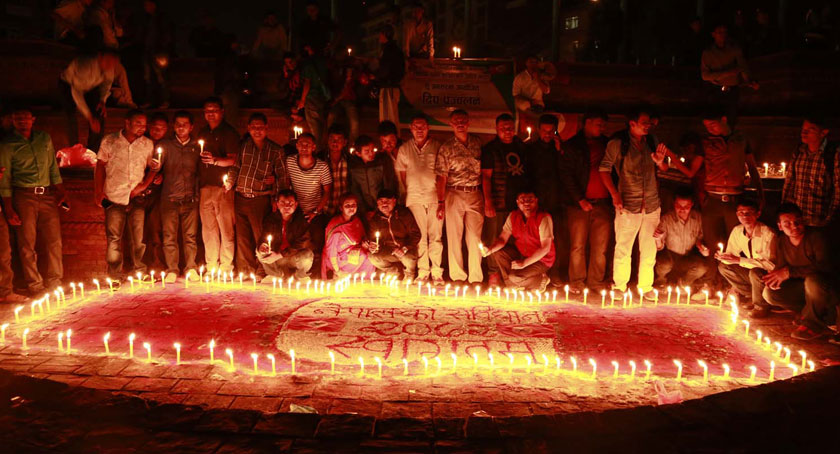 Youths light candles at Maitighar Mandala as the Constituent Assembly endorsed all the articles of draft constitution on 16 September 2015 | Photo: RSS
Youths light candles at Maitighar Mandala as the Constituent Assembly endorsed all the articles of draft constitution on 16 September 2015 | Photo: RSS
Santosh Mehta, spokesperson for the then Rastriya Janta Party Nepal, reminisces the time he felt the CA veered off-course in 2015. “I hadn’t imagined the major parties would ditch the demands of the Madhesis and treat us as if we are not Nepalis,” says Mehta. He says this constitution has divided Nepalis by creating psychological barriers between the country’s major ethnic groups. “Relations between the various ethnic groups would have been stronger and more cordial without this disrespectful constitution,” Mehta adds.
It took almost a decade following the 2007 Madhes movement to promulgate the constitution. Political parties tried to forge consensus in this time, mostly on the contentious issue of the number and nature of federal provinces, but to no avail. In the desperate post-earthquake days, all major parties had to compromise on their agendas to give the country a way out. But they failed to have Madhesi parties on board.
“It was no big deal. Had we not been able to have a constitution in September 2015, we would have had one by early 2016, which would also have helped resolve most contentious arguments,” claims Chandrakishore, a Birgunj-based journalist. He says major parties rushed the process, ignoring the demands of a large portion of the population. “They issued an urgent whip to the CA members without giving enough time to the parties on the street, in what was an intentional provocation,” he adds.
Fed up with the autocratic monarchy, there was a surge of hope among the people when the country became a federal republic in 2008.
“That hope would have died had the second CA also failed to deliver a timely constitution,” says constitutional expert Bipin Adhikari. “No one would then have believed that people’s representatives were capable of steering the country.” Adhikari thinks people would then have started pining for the monarchs again.
As nearly 90 percent of CA members (538 out of 598) voted in the charter’s favor, many politicians continue to consider it among the best constitutions in the world.
 Youths of Birgunj protesting against the promulgation of Constitution of Nepal 2015 | Photo: Madhesi Youth
Youths of Birgunj protesting against the promulgation of Constitution of Nepal 2015 | Photo: Madhesi Youth
Political analyst CK Lal reminds that each of Nepal’s seven constitutions—be it the one in 2015, in 1962 or in 1948—was touted as ‘the best in the world’. “This title has always jinxed us,” he shares. “If the second CA had also failed to deliver, they would most probably have added federalism to the Interim Constitution of Nepal 2007 and made it permanent,” he says. “This would have been better as the 2015 constitution is more regressive than the interim one in terms of the demands of Madhes.”
Hisila Yami, a member of the first Constituent Assembly from UCPN (Maoist), echoes Chandrakishore. “The 2015 constitution would have been more widely hailed and accepted had it been postponed by a few days,” she says. The constitution, in the form it was promulgated, watered down the rights of women, indigenous, and minority populations. Yet, she is happy that the second CA finished off a must-do task.
Sixty people were killed during the months-long protests against the constitution—six of them on the very day of its promulgation. Observers in favor of the parties’ decision to push for the constitution say that this number would have significantly increased had the constitution been put off any longer, while those against say nobody would have had to die in that case.
Most progressive political actors accepted the Constitution of Nepal 2015—even if some did so grudgingly—as it institutionalized federalism and paved the path to socialism.
Madhes-based critics, however, still have problems with citizenship, provincial structure, proportional representation and inclusion-based issues. Lal says major parties’ leaders won’t listen to Madhesi agendas. For him, eventually, there has to be another revolution to right the wrongs.
Yami says there are quite a lot of ways to make the constitution better—it’s just a matter of political commitment. Here too, she thinks Nepal needs a national political consensus. “This constitution is a glass half-full. We have to fill it soon,” she adds.
Constitutionalist Adhikari says any constitution is a work of compromise. “No one gets to fulfil all their demands,” he concludes.
What if… the constitution had been delayed?
The rapid unraveling of the Nepal Communist Party government, with its two-thirds strength in parliament, and the subsequent political instability, have deepened the debate about the desirability of the new constitution, promulgated on 20 September 2015. The constitution was meant to apply salve to a country traumatized by devastating earthquakes earlier that year. The major political actors mended fences to finalize the constitution, in what was an amazing show of unity. Yet the ‘fast-track’ constitution had started facing strong headwinds since the day of its promulgation, which was immediately followed by a six-month-long border blockade.
While Kathmandu and many mountainous communities celebrated the constitution—which had been seven years in the making at a cost of around $5 billion—parts of Tarai-Madhes marked it as a ‘black day’. In the reckoning of Madhesi parties and a large segment of Madhesis, many of their democratic aspirations had been crushed by the fast-tracked national charter. To this day, they continue to agitate for amendments.
So what would have happened had the constitution been delayed, as the Madhesis and some other sections of the society wanted? Expectedly, there are divergent views. “We would have gotten a constitution, but through some commission,” says Radheshaym Adhikari of Nepali Congress who was closely involved in making the 2015 constitution. “Such a national charter would not have reflected people’s aspirations”. CK Lal, a public intellectual, on the other hand, says in that case the Interim Constitution could have been given a permanent status, which would have been a better outcome as the 2015 constitution “is more regressive than the interim one.”
The debate will rumble on and perhaps even gain currency as disenchantment continues to grow against the current political leadership. Outstanding constitutional issues must be amicably resolved—and soon—to salvage the post-2008 progressive changes. Make no mistake: they are in grave danger.
Find the full story here.







